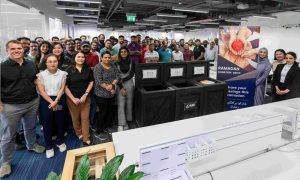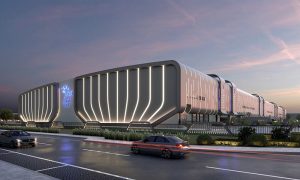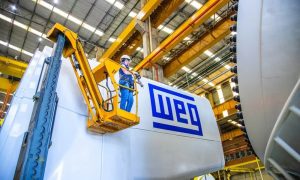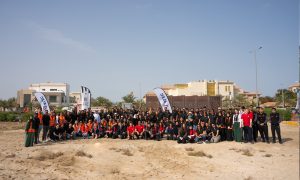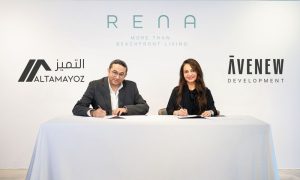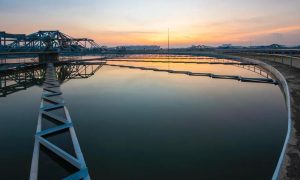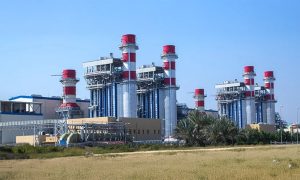Capital Market
Projects and opportunities in Abu Dhabi

Everybody has an opinion, but what is the real story behind Abu Dhabi’s development? Dan McAlister finds out
It may have been a victim of the same global conditions that shook the rest of the world, but the general consensus is that Abu Dhabi has demonstrated a resilience that protected it from the worst economic effects to ensure it remains a promising and lucrative market.
While there has been a dramatic downturn in the Emirate, today Abu Dhabi has many contractors, suppliers and designers preparing for the market to pick up fully.
Most recently the Emirate has mimicked Dubai’s tourism concept, launching many different kinds of projects, like the ‘leaning tower’ Capital Gate. The corniche has become an entertainment destination pulling in some of the biggest acts and sporting events, and Ferrari World hosting of the Formula One Grand Prix.
Etihad Rail project and ADPC’s Kizad, while others will take longer or be shelved indefinitely.
“Transport planning, in the form of the Surface Transport Masterplan, was a big part of the 2030 plan, so the various rail projects mooted are a big part of Abu Dhabi’s future,” Josh Dare – a partner in Ashurst’s global Energy, Transport & Infrastructure explains.
“That’s still true, but it’s also fair to say that a lot of what was included in the STMP won’t get built for quite a while.
“In many ways that is perfectly sensible. They are still talking about a metro/LRT project and that’s been in serious planning for some time now. It will probably happen, but probably not immediately and on a more considered and deliverable scale than the scheme that was originally envisaged some years ago.”
“I think the Mafraq freeway project will happen too but as a series of traditional procurements, probably in 2012,” Dare adds.
Global reality
Progress also depends on what happens in the country, the region and in the world. We all had something of a rude awakening in 2008 when we realised everything was connected to everything else. That is a global reality that applies here just as much as everywhere else. So, if say, the euro collapses and triggers another global recession, that will send shockwaves everywhere, including the Middle East.
“It’s a very competitive market which demands high quality at very aggressive prices, especially when you consider the very few tenders available on the table and the big number of contractors in the plaza. Which force some of the contractors to under cost, creating the unhealthy market conditions,” says Achraf Ibrahim a business development director for GDM.
“The market is heading toward infrastructural projects such as health care facilities, educational buildings, and tourism related projects. You can add to that the industrial sector developments, as Abu Dhabi is committed to the diversification of its economy.
Let’s forget for a while the real estate development, unless we talk about housing for UAE nationals.
“The 2030 plan is a very ambitious vision, and personally I believe Abu Dhabi will achieve all sited targets. Nevertheless, there is little sense in pursuing a plan that was studied during booming time and based on international and local financial atmosphere, totally different from the global crisis we have today. That’s why, in my opinion, the rhythm of progression in actuating the plan slowed down. Prudence is the key word, and it’s understandable. A plan should have revisions and amendments.”
Uwe Tscharnke is the commercial director at Cladtech International. He has lived in the UAE since 1997 and has many years of experience working in Toronto’s construction Industry.
“The problem is an oversupply. I have been told that Abu Dhabi is more willing to invest in infrastructure,” says Tscharnke.
“As engineers we build buildings so that people are going to use them later on. The idea in Dubai was to sell built assets as fast as possible with big profits and afterwards people didn’t care.
“Abu Dhabi was always a little bit more conservative with big money. It will most probably pick up next year, but slowly. If you go to Al
Reem Island there are many projects which have been stopped and just before the Al Raha Beach mall is a development with what used to be an elevator shaft, but no scaffolding, no formwork, work stopped around 2009.
“I know from big aluminum companies that had a healthy turnover last year or the year before of about AED300m that today nearly half are struggling for work,” he continues.
Yet, despite the gloom he positively addsthat the oversupply isn’t as high as in neighbouring Dubai.
“The difference with this region is they don’t need any credit to finance their work load. The money is there. In regards to 2030 we should be asking where all the people are coming from who are going to be using all this and where are the workplaces who are paying salaries to fund people to live here?”
Future focus
Abu Dhabi Education Council took a large step forward for education in Abu Dhabi this year.
There is a plan for the region to open 47 brand new private schools to cater for its growing private sector education needs. These are set to be completed in 2013. A number of housing complexes designed specifically for Emirati families also continue to make strong progress. Abu Dhabi offers a higher salary for workers than neighboring Dubai and with Sheikh Zayed Road it is easily commutable by car. Abu Dhabi’s GDP is expected to have swelled by around 3.8% in 2011 with growth focused in the hydrocarbon and non-oil sectors, according to data by the Abu Dhabi Chamber of Commerce and Industry.
On the other hand, with estimates that construction has slowed by 30% since pre-2008, it was most recently announced that Saadiyat’s Louvre, Zayed National Museum and Guggenheim museums will all face delays – in a worst case scenario of up to five years.
Further blows come from Saadiyat Island developer Aldar, which also recently announced it is to lay off 25% of its staff and news that the Tourism Development and Investment Company (TDIC), responsible for the execution of many of the major projects, had its budget cut by 28% last year.
As the world’s fourth largest oil producer, Abu Dhabi will be able to depend on its oil revenues for the short term, staving off the ‘crisis point’ it is rumoured to be – quietly – facing.
But how the Emirate will buck the trends of global financial markets to execute the enormous vision of Plan 2030, remains to be seen.
Some of the elements of plan 2030 include :
Capital 2030
Capital District
Khalifa Cit y B
Mohammed Bin Zayed City
Kizad
Abu Dhabi airport
Bani yas and Wat hba
Zayed Sports City
Masdar
Corniche Beac h Developme nt
Shahama Bahia
Revitali zation Masterplan
Al Gharbia 2030
Al Ain City 2030








